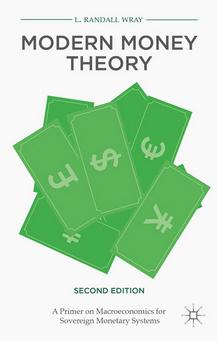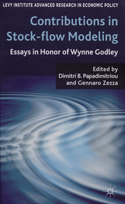
Research Topics
Publications on Monetary economics
-
Two Harvard Economists on Monetary Economics
Working Paper No. 917 | October 2018Lauchlin Currie and Hyman Minsky on Financial Systems and Crises
In November 1987, Hyman Minsky visited Bogotá, Colombia, after being invited by a group of professors who at that time were interested in post-Keynesian economics. There, Minsky delivered some lectures, and Lauchlin Currie attended two of those lectures at the National University of Colombia. Although Currie is not as well-known as Minsky in the American academy, both are outstanding figures in the development of non-orthodox approaches to monetary economics. Both alumni of the economics Ph.D. program at Harvard had a debate in Bogotá. Unfortunately, there are no formal records of this, so here a question arises: What could have been their respective positions? The aim of this paper is to discuss Currie’s and Minsky’s perspectives on monetary economics and to speculate on what might have been said during their debate.Download:Associated Program:Author(s):Iván D. Velasquez -
Modern Money Theory: A Primer on Macroeconomics for Sovereign Monetary Systems, Second Edition
Book Series, September 2015 | September 2015By L. Randall Wray

In a completely revised second edition, Senior Scholar L. Randall Wray presents the key principles of Modern Money Theory, exploring macro accounting, monetary and fiscal policy, currency regimes, and exchange rates in developed and developing nations. Wray examines how misunderstandings about the nature of money caused the recent global financial meltdown, and provides fresh ideas about how leaders should approach economic policy. This updated edition also includes new chapters on tax policies and inflation.
Published by: Palgrave Macmillan
-
Endogenous Money and the Natural Rate of Interest
Working Paper No. 817 | September 2014The Reemergence of Liquidity Preference and Animal Spirits in the Post-Keynesian Theory of Capital Markets
Since the beginning of the fall of monetarism in the mid-1980s, mainstream macroeconomics has incorporated many of the principles of post-Keynesian endogenous money theory. This paper argues that the most important critical component of post-Keynesian monetary theory today is its rejection of the “natural rate of interest.” By examining the hidden assumptions of the loanable funds doctrine as it was modified in light of the idea of a natural rate of interest—specifically, its implicit reliance on an “efficient markets hypothesis” view of capital markets—this paper seeks to show that the mainstream view of capital markets is completely at odds with the world of fundamental uncertainty addressed by post-Keynesian economists, a world in which Keynesian liquidity preference and animal spirits rule the roost. This perspective also allows us to shed new light on the debate that has sprung up around the work of Hyman Minsky, calling into question to what extent he rejected the loanable funds view of financial markets. When Minsky’s theories are examined against the backdrop of the natural rate of interest version of the loanable funds theory, it quickly becomes clear that Minsky does not fall into the loanable funds camp.
Download:Associated Program:Author(s):Philip Pilkington -
Contributions in Stock-flow Modeling: Essays in Honor of Wynne Godley
Book Series | June 2012Edited by Dimitri B. Papadimitriou and Gennaro Zezza

In the 1970s, at a time of shock, controversy and uncertainty over the direction of monetary and fiscal policy, Wynne Godley and the Cambridge Department of Applied Economics rose to prominence, challenging the accepted Keynesian wisdom of the time. This collection of essays brings together eminent scholars who have been influenced by Godley's enormous contribution to the field of monetary economics and macroeconomic modeling.
Godley's theoretical, applied and policy work is explored in detail, including an analysis of the insightful New Cambridge 'three balances' model, and its use in showing the progression of real capitalist economies over time. Godley's prescient concerns about the global financial crash are also examined, demonstrating how his work revealed structural imbalances and formed the foundations of an economics relevant to the instability of finance.
Published By: Palgrave MacMillan
Associated Program:Author(s): -
Income Distribution in a Monetary Economy
Working Paper No. 672 | May 2011A Ricardo-Keynes Synthesis
The paper provides a novel theory of income distribution and achieves an integration of monetary and value theories along Ricardian lines, extended to a monetary production economy as understood by Keynes. In a monetary economy, capital is a fund that must be maintained. This idea is captured in the circuit of capital as first defined by Marx. We introduce the circuit of fixed capital; this circuit is closed when the present value of prospective returns from employing it is equal to its supply price. In a steady-growth equilibrium with nominal wages and interest rates given, the equation that closes the circuit of fixed capital can be solved for prices, implying a definitive income distribution. Accordingly, the imputation for fixed capital costs is equivalent to that of a money contract of equal length, which is the payment per period that will repay the cost of the fixed asset, together with interest. It follows that if capital assets remain in use for a period longer than is required to amortize them, their earnings beyond that period have an element of pure rent.
Download:Associated Program:Author(s):Nazim Kadri Ekinci -
Changes in Central Bank Procedures during the Subprime Crisis and Their Repercussions on Monetary Theory
Working Paper No. 606 | August 2010The subprime financial crisis has forced several North American and European central banks to take extraordinary measures and to modify some of their operational procedures. These changes have made even clearer the deficiencies and lack of realism in mainstream monetary theory, as can be found in both undergraduate textbooks and most macroeconomic models. They have also forced monetary authorities to reject publicly some of the assumptions and key features of mainstream monetary theory, fearing that, on that mistaken basis, actors in the financial markets would misrepresent and misjudge the consequences of the actions taken by the monetary authorities. These changes in operational procedures also have some implications for heterodox monetary theory; in particular, for post-Keynesian theory.
The objective of this paper is to analyze the implications of these changes in operational procedures for our understanding of monetary theory. The evolution of the operating procedures of the Federal Reserve since August 2007 is taken as an exemplar. The American case is particularly interesting, both because it was at the center of the financial crisis and because the US monetary system and its federal funds rate market are the main sources of theorizing in monetary economics.
Download:Associated Program:Author(s):Marc Lavoie
